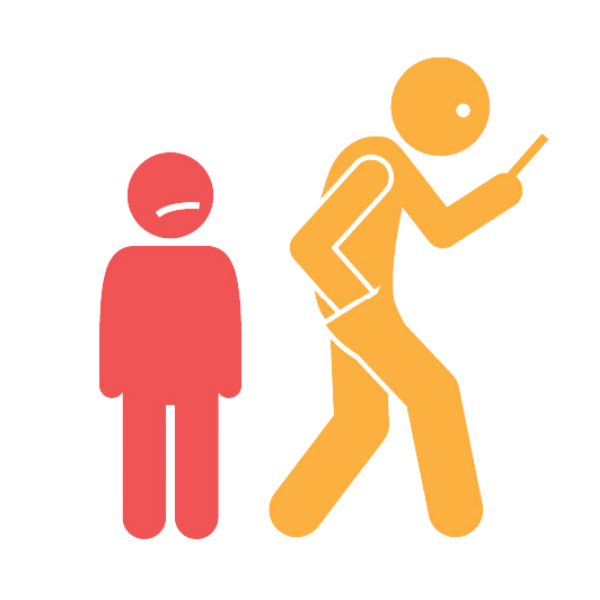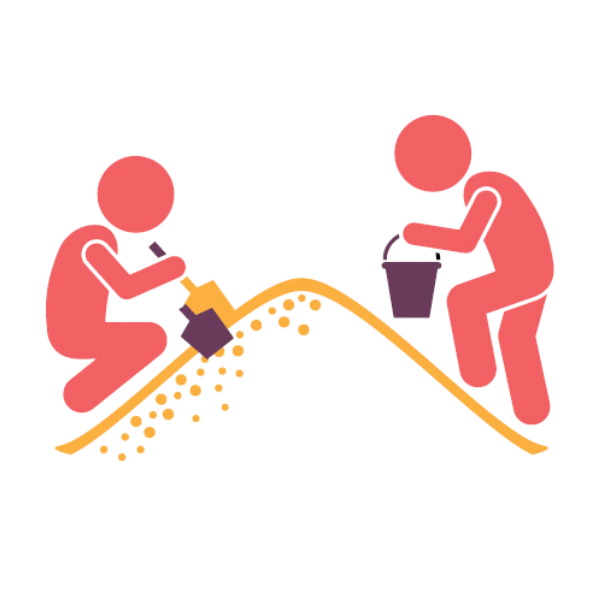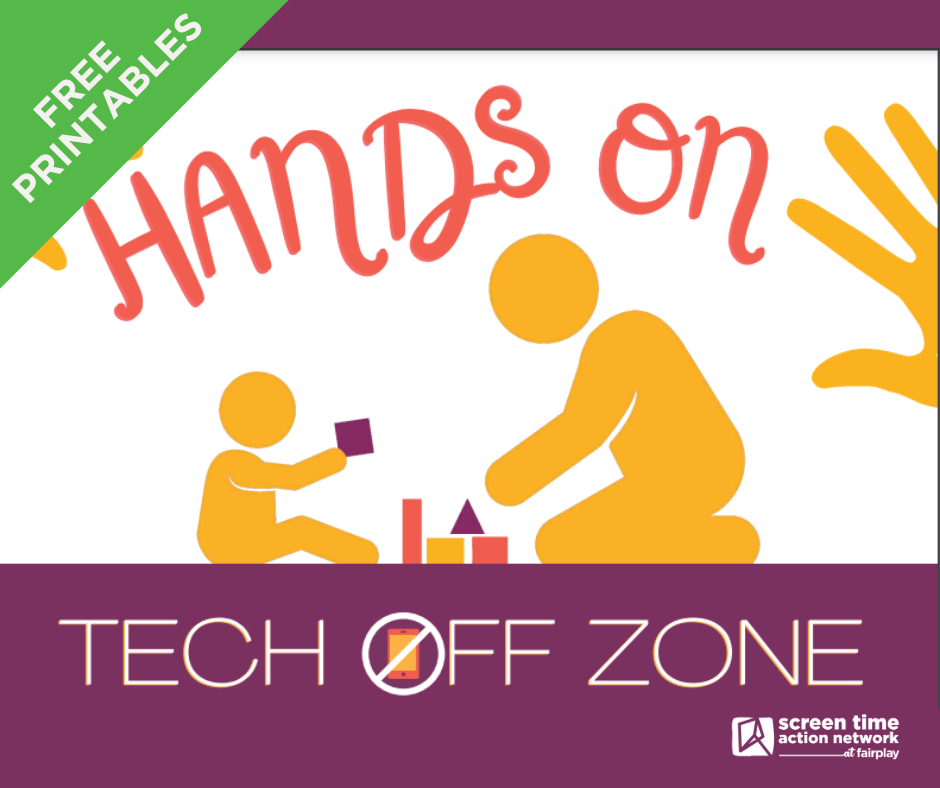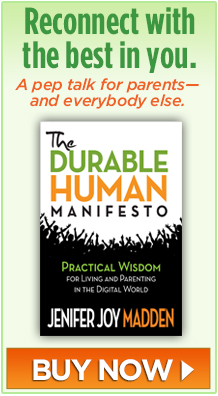
The Screen Aware Early Childhood Kit is a game changer for caregivers of young children who’ve lacked the words and wherewithal to talk with daycares, schools, babysitters, and relatives about the role of screens.
It’s so satisfying to have the right tool for the right job. A flathead won’t do when you need a phillips screwdriver. Plyers are different from a wrench.
But since the arrival of digital devices, parents have had precious few tools to work with. They quickly learned, for instance, there’s no lunchbox to contain social media.
Now comes a fact-filled fleet of info products to help caregivers manage screen use by and around children from birth until at least age 8. The toolkit arrives just as alarming new evidence floods in about how screen use can harm babies, toddlers, and young children.
The kit’s 10 research-backed fact-and-action sheets not only give parents a hand, but teachers, schools, and daycare providers, too.

Meeting Children’s Real Needs
Fact Sheet 1 answers to basic question “What do young children need?”
The answer is clear from the start: “There is no evidence that screen-based experiences provide the many benefits of real-world social interactions and caregiving.”
Action Sheet 1’s simple IRL activities strengthen kids’ well-being in of body, mind, and relationships. Examples include crawling and painting to build physical strength and creativity; doing chores for life skills and a sense of purpose; and taking turns and sharing for social-emotional development.
The Strength of Being Screen Aware
Fact Sheet 2 defines the meaning of “screen awareness.” That is, making a child’s developmental needs the top priority even in a world of beckoning digital devices and opportunities. Caregivers learn how unchecked device use usurps a child’s relationships, desires, behavior, and habits.
Ths sheet explains how being screen-free at an early age and screen-lite afterwards can stave off a horde of physical and cognitive problems ranging from unhealthy weight to nearsightedness to speech delay.
The Technoference Threat

Fact Sheet 3 nudges parents to hold up a mirror to themselves on the topic of “technoference.” That’s when screen use “gets in the way of crucial interpersonal relations and engagement.”
The key practices in Action Sheet 3 aim to reduce technoference and strengthen emotional connections between child and caregiver. Relationship-building activities include singing songs with little ones. A suggestion as kids get older is to be consistent with daily routines to provide a sense of stability.
Buyer Beware
Fact Sheet 4 covers new ground about the advertising woven into made-for-kids apps, games and online content. Parents also learn how “persuasive design” tricks keep kids glued to the screen. Another often misunderstood topic is explained: why “free” apps almost always cost more in money and headaches than spending a dollar or two to buy an ad-free product.
Action Sheet 4 lists questions to ask kids about how ads and influencers make them feel and act. Parent-directed questions cover the buying, downloading, or opening up of apps or shows. For starters: “Why am I having my child watch or play on a screen?”
Outdoor Power
Nature provides a respite in Fact Sheet 5, growing the understanding of why daily time outdoors is so good for a young human animal’s physical and mental health. New research also shows that outdoor play can actually offset some of the negative effects of screen exposure.
Activities in Action Sheet 5 span from going on a bug hunt, to having a picnic, to running an obstacle course. Book recommendations and additional resources expand parents’ knowledge about how and where to get kids outside.

Screen Alternatives at Home
Action Sheet 6 answers the vexing parent question, “What do we do when the screen goes off?”
For littles, suggestions are supplying no-or low-cost household playthings like empty paper towel rolls, play dough, markers and paper, or a sink of bubbly water.
The in-home screen awareness tips of Action Sheet 6 include having screen-free times and places, like meals and in bedrooms. Also, covering up TVs and monitors and placing small screens out of sight when not in use.
Groundbreaking Guidance on Child Data Collection
The next fact-and-action sheets are especially revolutionary.
Teachers and childcare providers are the target for Fact Sheet 7. The message: to make “hands-on experiences and in-person relationships” a priority.
Checklists of key practices include assessing if, when, and how screens are used in early childhood settings. Also, whether and how data on students is collected, handled, and stored.
Among Action Sheet 7’s suggestions are to avoid showing videos during breaks and lunch, or using screen time as a reward. Also, that teachers model the use of paper and pencil, plus the idea not to spend valuable in-class time taking pictures of children to show families later.
Managing Smart Speakers and Connected Toys
Fact Sheet 8 takes an unprecedented dive into the realm of Internet-connected things, including “smart speaker” listening devices and AI-driven toys.
Action Sheet 8 Action Sheet 8 coaches parents on using the Off switch and other controls. Also, on how to talk to kids about keeping safer if on social media, YouTube, and online games such as Roblox.
Parent are urged to be screen aware about posting kids’ pictures. Questions to ask themselves include “Will this embarrass my child now or later in life?” and “Does the platform where I may post this picture collect data on my child?”
Privacy and School Software Choices
Fact sheet 9 goes where few parents have dared to travel: inquiring about children’s data privacy in the classroom. The guiding principle: “early childhood programs using digital devices have an obligation to protect the personal information of children and families.” The sheet explains what to look for in screen use privacy policies and parental consent practices. Also, whether educational software has outside commercial or marketing purposes.
Action Sheet 9 gives families the language to ask probing questions, such as “Do you use digital devices, online programs or apps in the classroom? If so, which ones?” Also: “Do you offer opt-out or off-line alternatives that use book/paper/pencil?”

Keeping an Eye on Cameras
Fact Sheet 10 is aimed at how education and childcare professionals can influence “digital privacy priorities.” Camera use is covered—whether hand-held, in teaching, or pointed at students in the hallways.
Action Sheet 10 has best practices for managing photos, videos, apps and online tools. Also covered: the risks of live video streaming and the problems associated with using social media to communicate with parents, which can be viewed as an endorsement of a chosen platform. Facebook and Instagram, for instance, are among those which have been shown to be harmful to young users’ mental health.
Screen Free, Please
Along with the kit are attractive “Screen Free Zone” signs suitable for posting as a clear statement of purpose.

Flipping the Script on Digital Devices in School
Kit creator, the Screen Time Action Network, is a volunteer group of psychologists, childcare professionals, teachers, and parents dedicated to child well-being and careful screen use when appropriate. The group has produced an unprecedented set of tangible tools to help caregivers offer schools and childcare facilities another point of view on what has seemed until now to be the unassailable use of digital products.
All graphics pictured here are part of the Screen Aware Early Childhood Kit.
About the author: DurableHuman.com founder Jenifer Joy Madden is a health journalist, certified digital wellness educator, mom of three practicing durable humans, and part of the Screen Time Action Network. Read her books The Durable Human Manifesto (free download) and How To Be a Durable Human.




Thank you so much for providing this succinct research and information to the public at large. More importantly to all who interact with our precious children daily for long periods of time…parents, grand parents, and caregivers. All who read this and see the truth…please pass this information on and make someone aware. These child are OUR FUTURE! They are OUR responsibility. It takes a village to raise a child. Be durable and share! Knowledge is power!